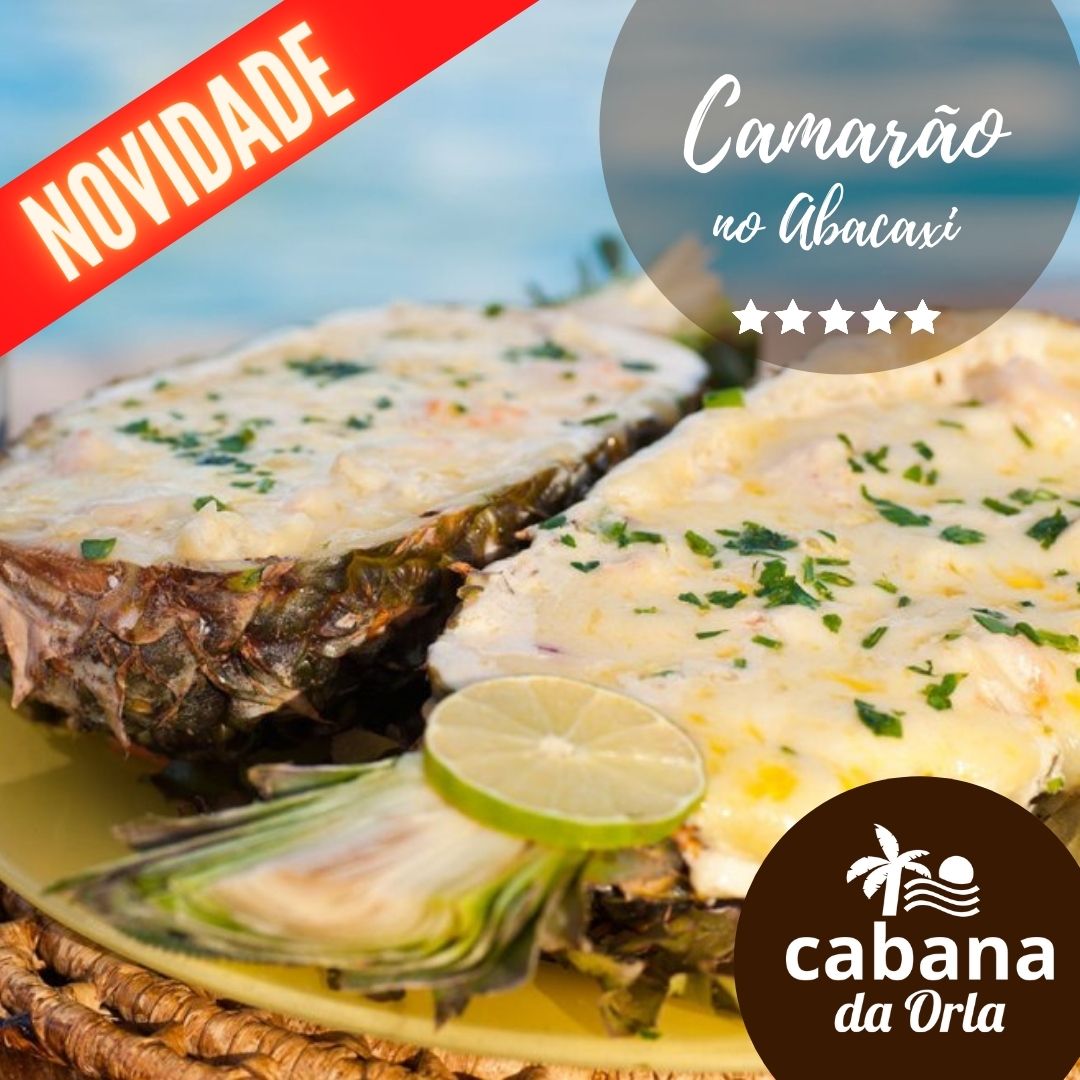BRAZILIAN FOOD
Moqueca Capixaba
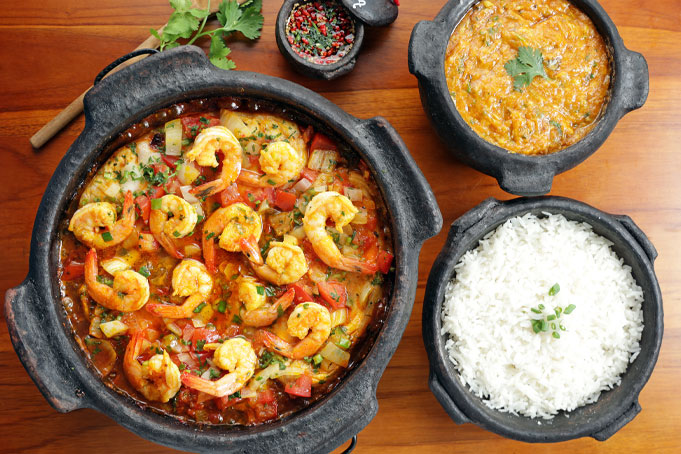
Probably the most delicious way to eat fish is made in the form of Moqueca. The moqueca is a stew, usually of fish, typical of Brazilian and Angolan cuisine.
In Brazil, it is a typical dish of the states of Pará, Bahia and Espírito Santo. It can be prepared with fish, shellfish, crustaceans, chicken or eggs. More recently, vegetarian variations have been created, replacing fish with ingredients such as green cashew pulp, plantains, jackfruit, hearts of palm, mushrooms, tofu, eggplant, cauliflower, etc.
For some scholars of Brazilian gastronomy, the origin of Brazilian moqueca goes back to the fish stew brought by the Portuguese, to which Africans would have added ingredients from their culinary tradition. However, it is important to remember that the indigenous people had, in fish, an extremely important food, as well as manioc flour. This association - fish and flour - was preserved in the combination of moqueca and pirão.
Pirão is a dish made with moqueca broth, where cassava flour is added until creamy.
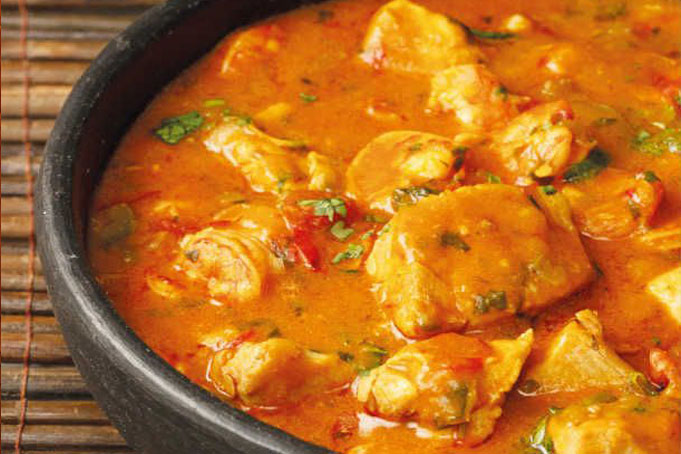
In the coastal region of the state of Espírito Santo, moqueca is present on the menu of 87% of establishments dedicated to the sale of meals, as a specialty with a strong identity appeal. The recipe is very similar in all these establishments, with small variations in the form of preparation. In the typical capixaba recipe, the color comes from the annatto dye; the oil is olive. The perfect frame is due to the clay pot, made by the potters in the neighborhood of Goiabeiras Velha, in Vitória. These artisans mold, burn and dye the pots with bark taken from the mangrove. The custom of preparing and serving Moqueca in a clay pot is present throughout Brazil.
The moquecas and the capixaba pie (another local delicacy characteristic of Holy Week) are part of the cultural identity of the people of Espírito Santo, and this certainly explains the historical continuity of the handmade manufacture of clay pots. The city of Vitória grew and reached Goiabeiras, which became a neighborhood in the capital. But there, black pots continue to be made, as always. As the city grew, the potters progressively became more professional and made their craft the most visible cultural and economic activity in the place.
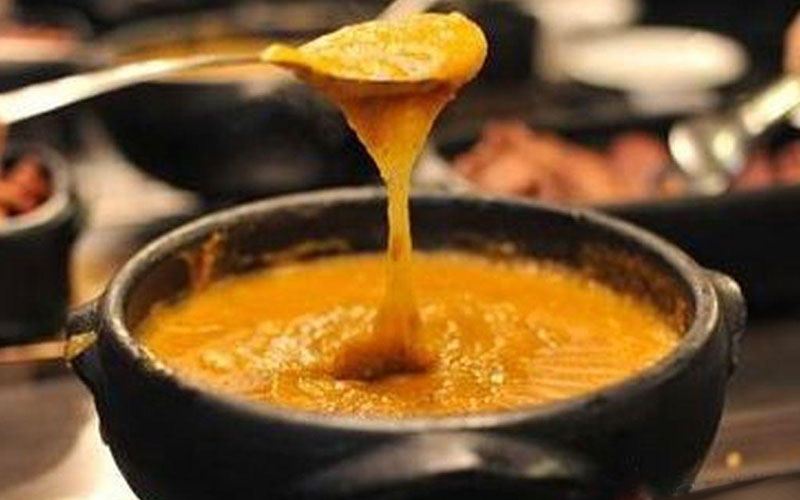 Pirão
Pirão
 Plantain Moqueca
Plantain Moqueca
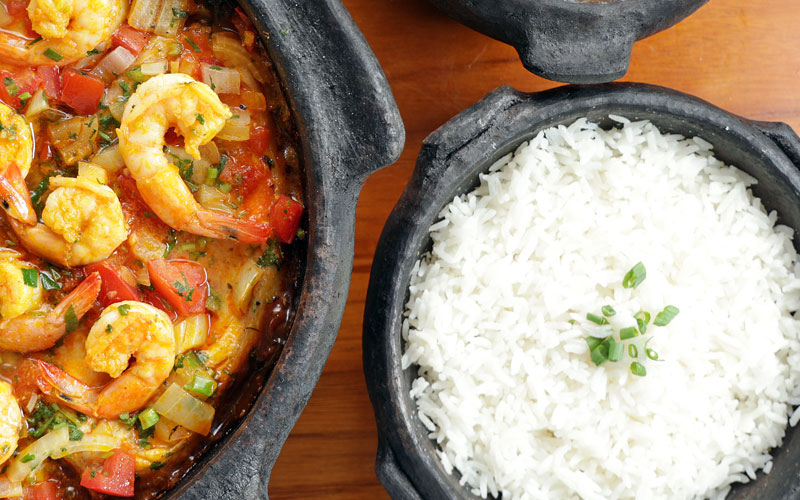 White Rice
White Rice
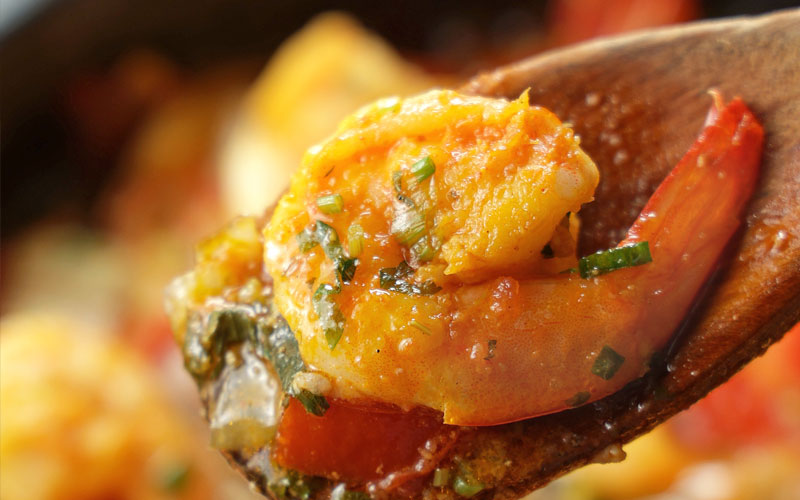 Shrimp Moqueca
Shrimp Moqueca
